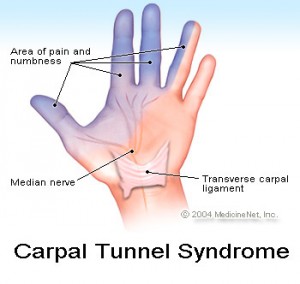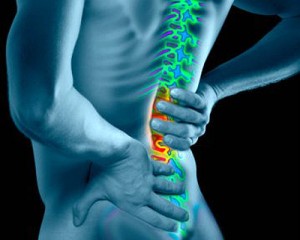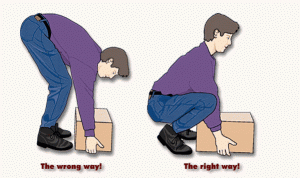PhysioRoom.com hacks office ergonomics
Ӊn this world you’ve got to turn up, log on and grind outӼ/i> Corrigan, M. (2003). Record numbers now sit slouched at the office chair, in traffic and on the sofa when returning home. We, the great nation of Hollandֳ Pies, have become a գivilisedՠcohort of sitters.

Until the technological boom of the 20th century, the notion of office work for the masses was deemed ludicrous. Traditionally, those who worked in such environments stemmed from the higher echelons of society; the educated, the wealthy, the noble. The common man worked with his hands, on his feet and nursed his ailments with large doses of brandy. After all, Army Officer’s are not titled such on merely a whim. [1] In 21st century Britain however, the tables have well and truly turned as the common man’s life is run from window-walled urbanised battleships. Call centres, publishing companies and the ever opaque field of human relations – whatever the hell that actually is – are all run from glorified Microsoft sardine tins. Falling rapidly into a trap of complacency and tedium the common man is a self-assessing lab rat for the iGeneration. His leisure time involves Netflix, his conversations end with a hash tag and his love is found in a search bar.
I am Jackֳ complete lack of office supplies.
So what happens to the office monkey who spends his day frantically typing Shakespeare? What is to become of his posture, his athleticism and inevitably, his waistline when office ergonomics are ignored? Darwinֳ most prominent work ‘The Blight of the Human Condition in the Xerox Dimension’ determines that the human body was not designed to sit at a 45 degree angle (seriously – thatֳ science) and tapper on a keyboard all hour of the day – no matter how ergonomic. For you Hunchbacks of Notre Dame squinting into the screen of your DELL monitor, the dangers of improper office ergonomics can be halted and even reversed by following a few simple systems each day. PhysioRoom.com has developed the following top tips for hacking office ergonomics below. Enjoy.
Carpal Tunnel Syndrome

Cause: Compression of the median nerve due to using a mouse and keyboard, keypunching, milking cows.
Effect: Discomfort in hand, forearm or upper arm, general weakness in thumb and eventual atrophy of affected area.
Solution: The PhysioRoom.com Wrist brace with thumb support plus a multitude of hand exercises such as these[3] may be sufficient[4] but for those in real Dire Straits, taking the surgical route may be the only way to alleviate pain and discomfort. Catch it early and prevent it by correcting your hand position on the keyboard and using all of your fingers (no floaters). Straying away from the poised pounce position on the mouse is another handy tool alongside various stretches and warm ups (seriously).
ˌower back muscle strains (RSI)

Cause: Repetitive Strain Injury is, as its name suggests, a chronic injury caused by a repetitive action and/or positioning with inadequate support (shlomping).[5]
Effect: Pain, aching, stiffness, cramp. Chronic conditions that escalate over time, cause swelling and can become irreversible.[6]
Solution: Using an ExtraComfort Memory Foam lumbar support from PhysioRoom.com can help to relieve lower back pain and correct your posture at the desk. Couple this with an exercise regime that strengthens the lower back such as core exercises (plank) and yoga or simple back extensions next time youֲe in the gym.[7] However, if damage has already been done to a high scale a trip to your local physiotherapist/chiropodist is a must. If this sneaky ailment takes hold Рthe effects can be crippling.
Eye strain (Asthenopia)
Cause: Unclear images, inappropriate eye distance from screen, glaring at your computer all darn day.
Effect: Headaches, eye pain, shoulder and neck pain (from bending to view the screen).
Solution: Using an appropriately sized screen in clear focus without flickering. Moving the screen to within 18-30 inches from the eyes and making sure that the top of the monitor is no more than eyebrow height. If you don’t have eyebrows – use your imagination.[8]
Lifting injuries

Cause: Throwing printers down stairs and carrying cans of Coke.
Effect: Acute injuries typically featuring the lower back (that pesky area again) include pulling a number of muscles and strains. These can be either muscle strain or ligament sprain[9] and are represented by acute pain, aching and muscle spasms. Should pain wander down your leg at any point, there is a possibility of Sciatica – erm, go to the hospital.
Solution: Leaving your Lou Ferrigno impressions at the door and remembering that if you must lift something, this is not the gym, you are likely not warmed up and paper is heavier than it looks. Wherever lifting is unavoidable remember to lift from a squat position and use the legs to propel you upwards. Working your lumbar region like a crane will only leave you hobbling across to the water tower – and stationary closet shenanigans? Forget it. For those already in a situation of adversity a chiropractor is your first port of call should pain remedies have proved themselves useless. Couple treatment with heat products such as the PhysioRoom.com Instant Heat Pack.
[1] en.wikipedia.org/wiki/Office
[2] http://www.livescience.com/15689-evolution-human-special-species.html
[3] http://www.sparkpeople.com/resource/fitness_articles.asp?id=1527&page=2
[4] http://www.nhs.uk/Conditions/Carpal-tunnel-syndrome/Pages/Treatment.aspx
[5] http://www.myvmc.com/lifestyles/office-ergonomics-tips-for-preventing-muscle-strain/
[6] http://www.nhs.uk/Conditions/Repetitive-strain-injury/Pages/Symptoms.aspx
[7] http://www.nhs.uk/Livewell/Backpain/Pages/low-back-pain-exercises.aspx
[8] http://www.myvmc.com/lifestyles/office-ergonomics-preventing-eye-strain/
[9] http://www.spine-health.com/conditions/lower-back-pain/pulled-back-muscle-and-lower-back-strain


